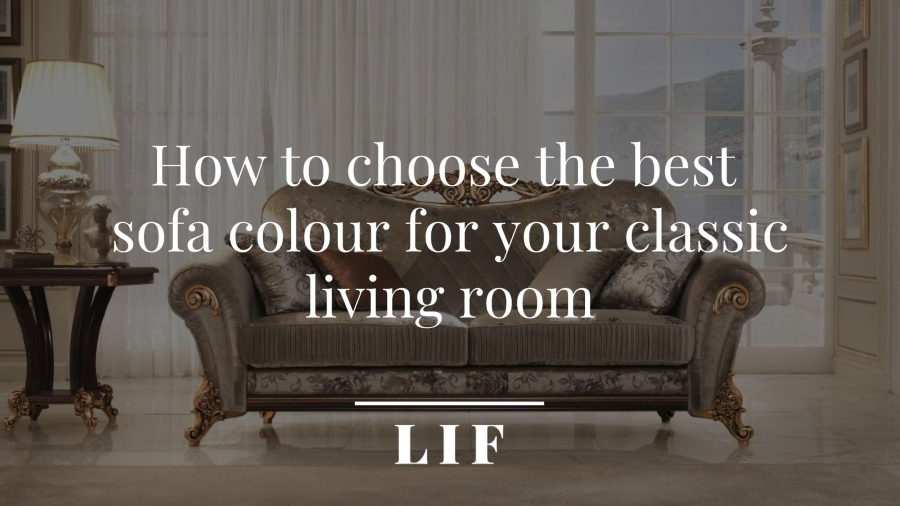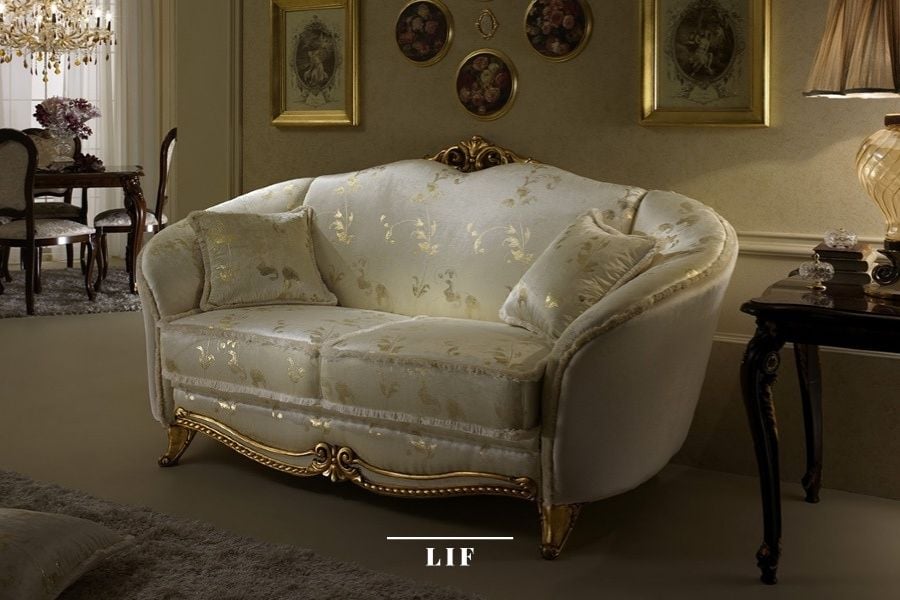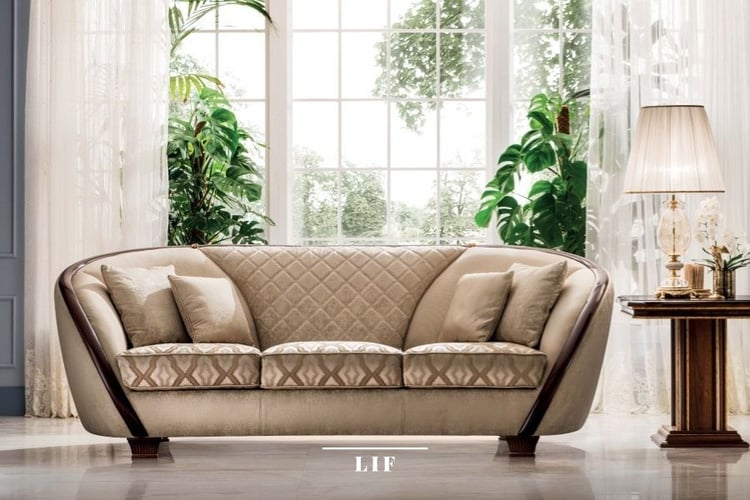Luxury classic furniture plays with colours to direct the atmosphere and define the stylistic imprint.
Colour palettes can emphasise the class of precious details and illuminate an important material. With the same incisiveness, they can also soften the opulence of a piece of furniture or, to the contrary, enhance the majestic, sophisticated style of its design.
As a painter would do when faced with a blank canvas, the Interior Designer chooses a basic shade for 'their' home to be furnished, and builds a vision and stylistic imagery around it.
The "guiding colour", the absolute protagonist of the canvas (of the furnishing project), can come into play through the walls, the upholstery and the architectural decorations, or it can rely on a single chromatic point, but with great scenic impact.
For example, a piece of furniture that "catches the eye": a precious table, a curving sofa a glittering ceiling light or any other element that steals the scene, emits "vibrations" and becomes central to the stylistic figure and the project’s colour palette.
- Colours for classic interior design: the colour choice for the sofa
- His majesty the sofa: classic colours, but not too much so!
- Classic sofa: when to go for light colours
- Sofa in a dark suit: charm and scenic perspective - How to choose classic sofa colours: conclusions

Colours for classic interior design: the colour choice for the sofa
In the living room, the sofa is often the central piece of furniture: it is around the living room area that moments of closeness and sharing are created, where the family gathers or we indulge in moments of pure relaxation.
Classic sofa colours do not necessarily have to follow a set path.
The choice of colour for the sofa can be enhanced with expressive freedom and range from more neutral tones (white, ivory, beige) to stronger, more decisive ones - cobalt blue, dark blue, leather, chocolate, burgundy red, copper - which shuffle the cards and break up the compositional balance in favour of a quid of personality.
As always, the secret lies in mixing a good dose of harmony with a pinch of healthy light-heartedness.
Who says that classic interior design cannot be combined with contemporary colour accents?
Exactly the opposite is true: the opulence of the classic style can be lightened and enhanced by the coolness of modern, textured colours or the impalpability of delicate, silky colours.
After all, in Interior Design, stylistic rigour is the equivalent of painting technique for an artist: indispensable for realising creative ideas, but not sufficient to trigger the evocative capacity of the room (and the painting!).
His Majesty the Sofa: classic colours, but not too much so
The choice of colours for a classic sofa should, on the one hand, break free from stylistic canons to pursue that famous trail of expressive freedom which can make the overview of the living room unique, on the other hand, reasoning by subtraction or addition according to the furnishing context.
Let's see how.
Classic sofa: when to go for light colours
If the living room is dominated by the dark woods and glossy finishes of the classic style furniture a good idea to brighten up the room and soften the majesty of the furniture could be to focus on light, ethereal and natural colours for the sofa and armchairs.
The most instinctive choice is white: pure light, innate class, unrivalled versatility.
The various nuances of beige (sand, ecru, cream) also work very wellwhich, compared to white, have the advantage of harmonising better with the various types of wood and with the baroque and imperial atmospheres of classic furniture.
While white creates a fascinating contrast to the dark wood furnishings, beige sofa creates a refined stylistic continuum with the golden finishes typical of classic interior design.
An ivory sofa, on the other hand, is a halfway solution that has the advantage of illuminating the room and, at the same time, cooling the warm tones of the wood and the sumptuous details of Classic Design.
Among the light tones, ivory is therefore the most suitable to colour "a classic but not overly classic living room": if the chromatic declination is chic and refined, and goes well with precious woods and shiny materials, the allure also turns towards contemporary atmospheres.

A sofa in a dark suit: charm and scenic perspective
In styling classes we were always told that 'in small rooms you use white to make them look bigger'. True, but not always!
Imagine a mini-living room in neutral tones only: it would lose depth and perspective and risk appearing flat and anonymous.
Sometimes dark colours have the task of shifting the focus from space to atmosphere, creating cuts and variations that break the monotony and make the size of the room irrelevant.
If the overall vision yields a more appealing result, it is sometimes better to break a stylistic rule than to adhere to it 'blindly' and unconditionally.
Choosing classic sofa colours is therefore a question of style, but also of atmosphere and "opposites attract": a dark, warm and bewitching colour can illuminate more than total white can.
The choice of colour should never be an end in itself, but directed and contextualised to create alternating contrasts and references.
Only in this way will the "evening dress" sofa become the protagonist of an architectural space and be able to infuse light and character, broaden the perspective and communicate harmoniously with the cushions, curtains, accessories and other furniture that make up the furnishing project.
On top of the neutral base of an art Deco living room, dominated by sparkling glass, luminous inlays and chic marble details, it will be important, for example, to create a core of colour to amplify the vision and change register.
What better than a dark grey, black or navy blue sofa, embellished with soft, sinuous lines, capitonné work, velvet or satin details and golden finishes, to give the room an elegant and refined look?

How to choose classic sofa colours: conclusions
Beware of thinking that 'classic' means predictable!
The trend of Classic Style is rather to encourage chromatic derailments, as long as they are well thought out, harmonised and capable of enhancing the quality of the classic Made in Italy style.
Basically, whether sober or flashy, the colours of the classic sofa, and the stylistic arrangements, must always follow in the wake of the refinement and value of the other living room furnishings.
Colour variation can travel in two directions: create an evocative contrast or align itself discreetly with the silver leaf finishes on furniture, the gilded decorations of display cabinets, the sheen of marble, or the timeless charm of the finest woods.
Amidst the references and contrasts, overlaps and unusual mixes, the important thing is that the palette creates a harmonious balance and that the final chromatic effect is a refined (and unpredictable!) lesson in classic styling.

